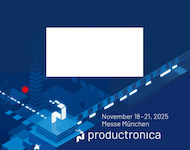
© yury asotov dreamstime.com
Analysis |
Sensor hubs make big gains while enabling the future of sensing
Sensor hubs that offload tasks from power-hungry application processors and let mobile devices like smartphones and tablets run longer on a single battery charge are reaping gargantuan gains thanks to the global microelectromechanical systems (MEMS) market, with shipment growth this year alone in triple-digit territory, according to IHS Technology.
Worldwide shipments of sensor hubs in 2014 will reach a projected 658.4 million units, up 154 percent from 259.6 million units last year. The market has been on a tear since 2011, when shipments first started from a low initial base. The 2012 growth rate, for instance, exceeded 2,000 percent.
From then until 2017, the market is pegged to increase 1,300 percent to shipments of 1.3 billion units.
“A sensor hub is a low-power processor that can be used to perform calculations on data from sensors, the hub thereby saving power on a device by off-loading such tasks from the power-intensive application processor,” said Marwan Boustany, senior analyst for MEMS & sensors at IHS. “The use of sensor hubs is increasingly crucial because of the push for ‘always on’ sensors used for activity monitoring, voice-command operation and contextual awareness.”
Most of sensor processing today is performed by software running on an application processor, but this approach is too power hungry when sensor processing must continuously run in the background. With rising use by handsets and tablets of sensors—not just motion sensors but also microphones and light sensors—the need for a low-power solution becomes crucial.
By centralizing sensor processing in a more efficient way through sensor hubs, power usage and battery life are optimized, Boustany added.
Sensor formats vie to deliver maximum benefits
The centralized processing in a sensor hub is typically achieved via three different approaches, each with its own advantages along with specific tradeoffs in cost or performance.
One approach employs an external hub, typically a dedicated microcontroller (MCU), as offered by the likes of chip makers such as Atmel, STMicroelectronics, Texas Instruments and NXP Semiconductor. Recent smartphones that use this approach include the Apple iPhone 5s, Samsung Galaxy S5 and the Motorola Moto X.
A second method utilizes a low-power sensor hub as part of an application processor, offered by Qualcomm, Intel and Nvidia through a low-power core—and in the future to be provided as well by Samsung’s Exynos, MediaTek and HiSilicon. Such an integrated approach has advantages compared to the discrete MCU format, reducing additional chip-design efforts and entailing no additional components, but it also cannot compare for now to the lower power delivered by MCUs.
Apple, for instance, is likely to stick to the MCU approach for its high-end product offerings, even if the MCU solution will be overtaken in the market by the application-processor integrated approach after 2016, IHS analysis shows.
A third way for implementing sensor hubs is through a package that combines both a low-power processor—typically an MCU—and one or more sensors, typically an accelerometer and gyroscope. The accelerometer and gyroscope are the most common sensor combination, allowing for various levels of activity and motion tracking, ranging from step counting to more detailed motion tracking and contextual awareness. InvenSense and STMicroelectronics are currently the main proponents of this approach, with Bosch, Freescale Semiconductor and Kionix also offering similar products.
Two new mechanisms are also on the horizon. These include a field-programmable gate array (FPGA)-based sensor hub that allows for a very low-power solution for original equipment manufacturers that can also be redesigned; and a GPS-chipset-based sensor hub that offers location-tracking-related functions in addition to motion-sensor processing. Both these formats, however, are expected during the next four years to occupy just niche positions in the handset and tablet segments in the face of relatively low volumes compared to the three other more mainstream sensor hub formats.
Overall, the MCU approach will be the best-performing, most flexible solution for high-end handsets and tablets for several development generations to come, noted Tom Hackenberg, senior analyst for MCUs & microprocessors at IHS.
Meanwhile, the application-processor-based approach will prove the most convenient for handset and tablet suppliers, making its way into the mid- to high-end range of handsets, by itself and in combination with one of the other sensor hub implementations as part of a layered solution. The Moto X is one example of a handset that takes this approach.
The combined processor and sensors approach could also straddle the midrange all the way to the high end with its potential for very-low-power operation, where it could exist by itself or in combination with a different sensor hub implementation.
“In whatever format, low-power sensor hubs are absolutely critical to supporting the expansion of sensors and other low-power capabilities in mobile and other applications, such as wearable electronics,” Hackenberg said.
Top sensor hub suppliers identified
The No. 1 supplier of sensor hubs last year was California-based Atmel, with 32 percent of total industry shipments. Next was Qualcomm, also from California, with 29 percent market share, followed by NXP of the Netherlands with 24 percent.
Other important suppliers were Dallas-based Texas Instruments; Rohm Semiconductor from Japan; French-Italian maker STMicroelectronics; and InvenSense and Nvidia, both from California.




